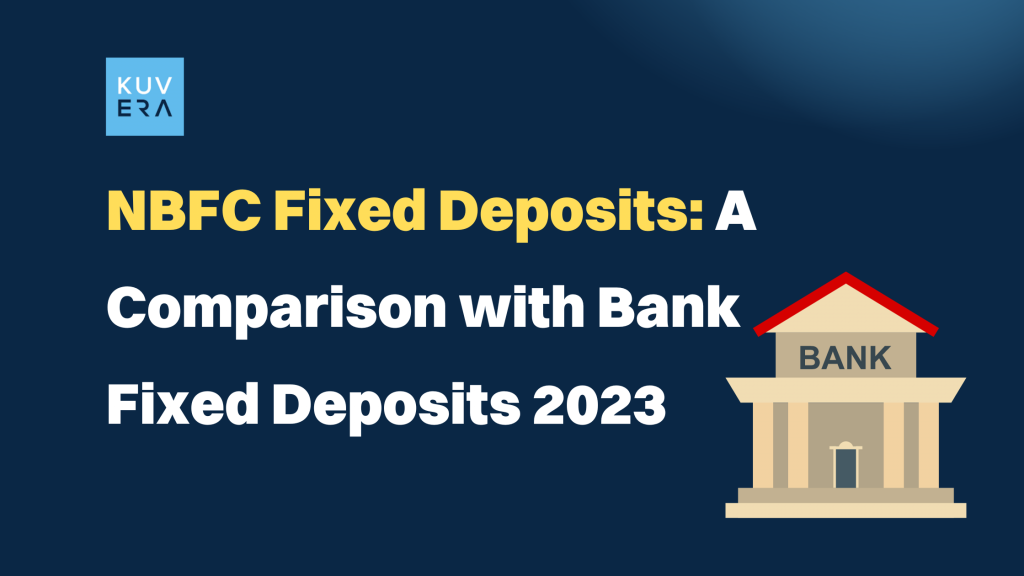In the world of finance, there are various avenues for investment, and one of the lesser-known yet viable options is Non-Banking Financial Companies (NBFCs) Fixed Deposits. In this blog, we will delve into what NBFCs are, explore NBFC Fixed Deposits, and highlight the key differences between NBFC Fixed Deposits and traditional Bank Fixed Deposits.
What are NBFCs?
Non-Banking Financial Companies, or NBFCs, are financial institutions that offer banking and financial services similar to traditional banks but operate without a banking license. NBFCs play a crucial role in providing credit and financial services to segments of the population that may not have easy access to traditional banking institutions.
NBFCs can engage in a wide range of financial activities, including lending, investment, asset financing, and more. They cater to diverse financial needs, making them an essential component of the Indian financial sector.
What are NBFC Fixed Deposits?
NBFC Fixed Deposits are investment products offered by Non-Banking Financial Companies. Similar to Bank Fixed Deposits, NBFC Fixed Deposits allow investors to deposit a lump sum amount for a fixed tenure at a predetermined interest rate. These deposits are considered a safe and secure investment option, making them an attractive choice for risk-averse investors.
How are NBFC Fixed Deposits Different from Bank Fixed Deposits?
While both NBFC Fixed Deposits and Bank Fixed Deposits offer a safe investment avenue, there are several key differences between the two:
1. Regulatory Authority:
- Bank Fixed Deposits: Banks are regulated by the Reserve Bank of India (RBI), making them subject to stringent guidelines and supervision.
- NBFC Fixed Deposits: NBFCs are regulated by the RBI to some extent, but their regulations are not as comprehensive as those of banks. This means that NBFCs may have a bit more flexibility in their operations.
2. Interest Rates:
- Bank Fixed Deposits: Banks, being more regulated, often offer slightly lower interest rates compared to NBFCs.
- NBFC Fixed Deposits: NBFCs, in an attempt to attract investors, may offer higher interest rates on their Fixed Deposits. Checkout top NBFC FD interest rates here.
3. Credit Ratings:
- Bank Fixed Deposits: Banks typically have high credit ratings, indicating a lower risk of default.
- NBFC Fixed Deposits: The credit ratings of NBFCs can vary. It’s essential to check the creditworthiness of the specific NBFC offering the Fixed Deposit.
4. Liquidity:
- Bank Fixed Deposits: Banks generally offer higher liquidity options, with the ability to prematurely withdraw funds with a penalty.
- NBFC Fixed Deposits: NBFC Fixed Deposits may have more stringent terms regarding premature withdrawals, which could affect liquidity.
5. Tax Deductions:
- Bank Fixed Deposits: Interest earned from Bank Fixed Deposits is subject to TDS (Tax Deducted at Source) if it exceeds a certain threshold.
- NBFC Fixed Deposits: TDS may also be applicable to NBFC Fixed Deposits, but investors should confirm this with the specific NBFC.
In conclusion, NBFC Fixed Deposits offer an alternative investment option with potentially higher interest rates but come with different risk factors compared to Bank Fixed Deposits. Investors should carefully assess their risk tolerance, liquidity needs, and the creditworthiness of the NBFC before opting for NBFC Fixed Deposits. As with any financial decision, it’s advisable to consult with a financial advisor to make an informed choice that aligns with your financial goals.
Interested in how we think about the markets?
Read more: Zen And The Art Of Investing
Watch/hear on YouTube:
Start investing through a platform that brings goal planning and investing to your fingertips. Visit Kuvera.in to discover Direct Plans and Fixed Deposits and start investing today.

